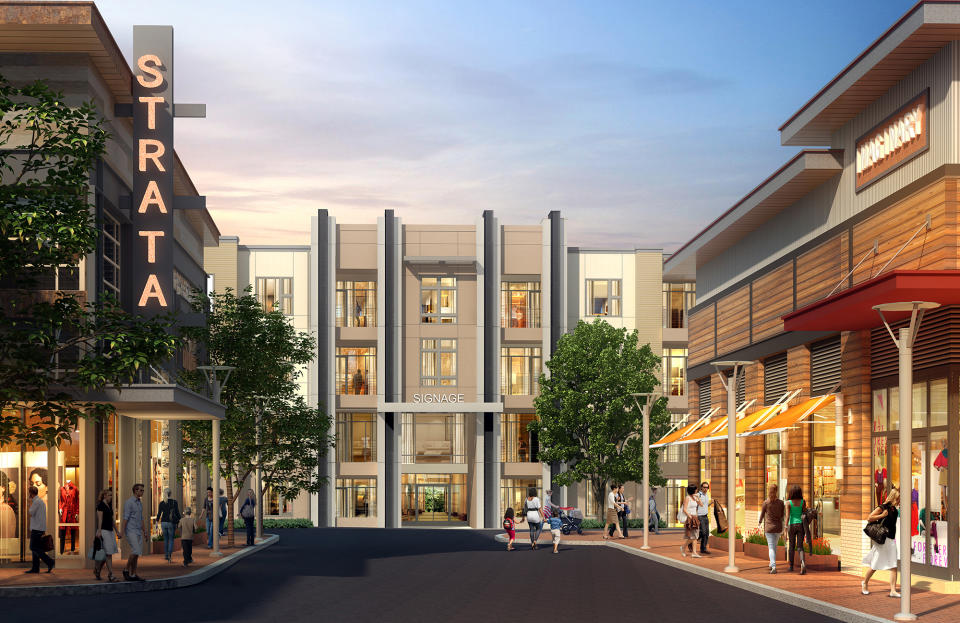Older millennials are leaving the city for a new kind of suburb
Why live in a metropolis when you can find urban perks in the suburbs?
Older millennials are realizing they don’t have a good answer to that question anymore. The result: a migration out of the city.
Almost half of millennial homeowners live in the suburbs, and the majority stay in the same metropolitan area when they buy a home, according to research from Zillow.
Annie Radecki, senior manager at John Burns Real Estate Consulting, says builders are now focused on creating “surban” environments, or urban-like developments in the suburbs.
While millennials might have once shuddered at the thought of trekking out to the ‘burbs, this very generation (who make up 42% of all homebuyers), is trading in the hustle and bustle of cities for less chaotic communities. And many of these “surban” environments provide millennials with the kinds of amenities they got in the city, including boutique fitness options, high-quality grocery stores and popular restaurants.

The Village at Valley Forge in King of Prussia, Penn., is a community of luxury apartments, townhomes, condominiums and senior living together with retail shops, restaurants, fitness center, healthcare and offices. It’s the ‘surban’ alternative to city life.
Philadelphia: a case study
The outskirts of Philadelphia are home to one of these hot suburbs — King of Prussia, Pennsylvania. Parc, a French restaurant in Philly’s high-end Rittenhouse Square, used to be the highest-grossing restaurant in the Philadelphia metro area. However, the pour house City Works, 20 miles outside of the city in the mixed-use Village at Valley Forge in King of Prussia, is hot on its heels, Radecki says.
“Before its redevelopment from a failed golf course into a so-called ‘surban’ center, King of Prussia was best known for its regional mall, IKEA, bad traffic, and empty, dated office buildings. Today, the suburban Village at Valley Forge offers a full calendar of community events, 24-hour Wegmans, REI, several healthy fast casual restaurants, bike trails, walking trails, and a new Children’s Hospital of Pennsylvania.”
Recently, she pointed out, Toll Brothers (TOL) opened the Brownstones at the Village at Valley Forge and has sold almost 40 units since opening last fall. However, Radecki says if you asked anybody born in the 1980s whether they would live in similar developments even five years ago, she would reply that she doesn’t know why anyone would make the move.
The appeal of moving out of the city
“Ask now, and she might report friends who got tired of a long and congested reverse commute and moved closer to work. Another friend, who had her first child, got yelled at for blocking the aisle at an urban Whole Foods with his stroller and liked that Wegmans (a spacious and high-quality local chain) was within walking distance rather than over the bridge in New Jersey.”
While there has been a long-perpetuated myth that millennials don’t want to buy homes, the reality is that the desire to become a homebuyer still exists — the timing has just been delayed. Still, young adults are more likely to find affordable homes outside the city.
America’s population for 20-somethings grew by 4.7 million people from 2005–2015 and is projected to decline slightly from 2015–2025. The very individuals who drove urban demand over the last decade are about to drive demand for surban housing — especially those in mature and slower-growing cities, says Radecki.
We should expect to see more and more young professionals and their families trading in overpriced and overcrowded apartments for the surban lifestyle.
Melody Hahm is a writer at Yahoo Finance, covering entrepreneurship, technology and real estate. Follow her on Twitter @melodyhahm. Read more: